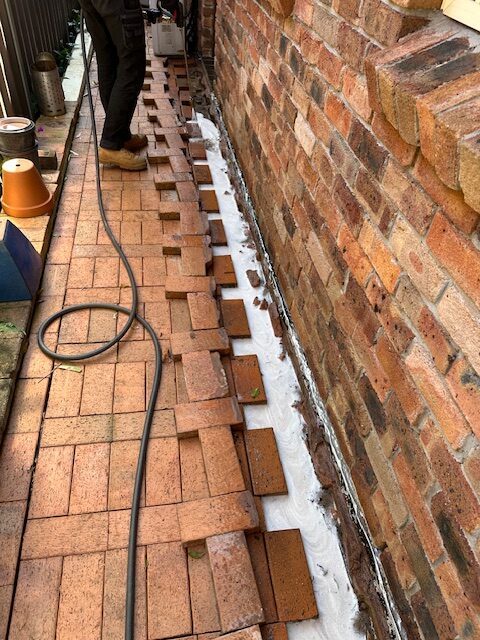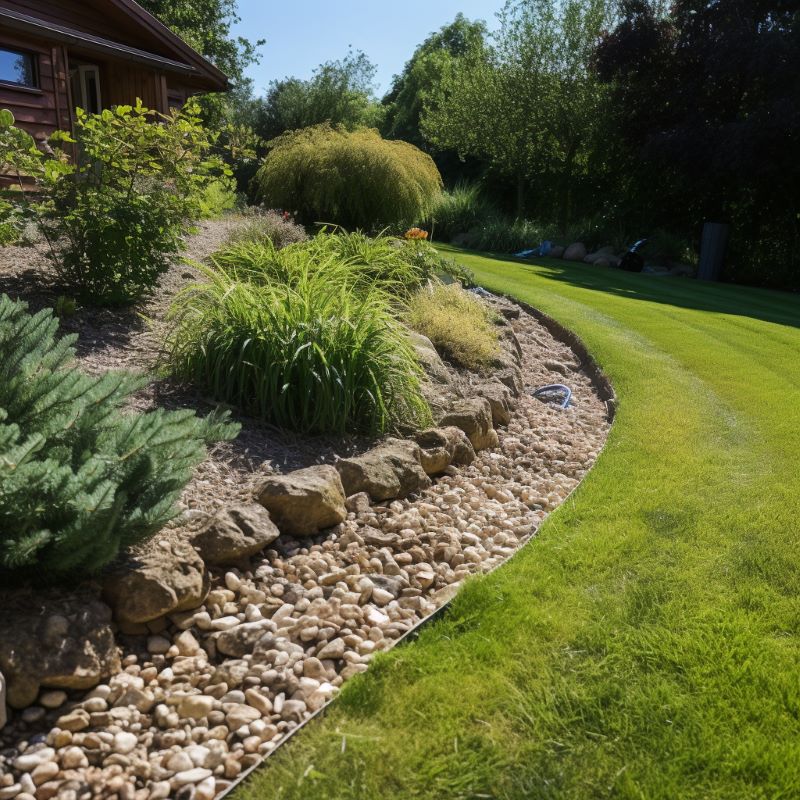Landscaping is more than just an aesthetic enhancement; it plays a significant role in increasing the value of your home and safeguarding it against potential threats like termite infestations. Proper planning and execution of your landscaping choices are crucial to maintaining the integrity of essential termite barriers. These protective systems are designed to shield your property from the destructive nature of termites. Unfortunately, some landscaping decisions and maintenance practices can inadvertently compromise these barriers, which may lead to severe infestations. This comprehensive guide is crafted to provide you with actionable strategies and insights to ensure that your landscaping decisions bolster your termite defenses while preserving these vital protective structures around your home.
Discover the Essential Function of Termite Barriers in Securing Your Home
Termite barriers are specialized protective measures, which can be physical or chemical, that are strategically installed around or beneath your home to prevent termites from infiltrating your property. Every homeowner should prioritize having a comprehensive termite management system in place, and understanding the specific type currently implemented is vital for effective property maintenance. A straightforward method to locate this information is by checking your electrical meter box. These barriers are critical in protecting structures, particularly in regions such as Sydney’s Hills District, where termite activity tends to be alarmingly high.
- Physical Barriers: Constructed from robust materials like stainless steel mesh or graded stones, these barriers are installed below the building to effectively thwart termites from burrowing through.
- Chemical Barriers: This approach involves applying liquid termiticides to the soil surrounding a structure, creating a treated zone that actively deters or eliminates termites from gaining access to your home.

Recognizing Landscaping Practices That Could Compromise Termite Barriers
Many common landscaping practices can inadvertently damage or undermine the integrity of termite barriers, creating vulnerabilities that could lead to significant infestations. A solid understanding of these practices is essential for maintaining effective protection against termites and ensuring the longevity of your barriers.
1. Planting Too Close to Your Home
When plants, shrubs, or trees are positioned too close to your house, they can introduce a variety of issues:
- Roots may infiltrate physical barriers or disrupt the treated soil in chemical barriers, significantly undermining their effectiveness.
- Dense vegetation can retain moisture adjacent to the building’s foundation, creating a hospitable environment for termites to thrive.
2. Adding New Soil or Mulch
Introducing layers of soil or mulch near the foundation can create a bridge over chemical barriers, allowing termites to bypass these essential protections. Organic mulch is particularly problematic as it can serve as both sustenance and shelter for termites, thus making it an attractive habitat for these pests.
3. Paving and Hardscaping Projects
The installation of paving, patios, or retaining walls in proximity to your property can disrupt existing termite barriers. The excavation and soil movement required for these projects might compromise the chemical seal or create gaps in physical barriers, leading to increased vulnerabilities that termites can exploit.
4. Irrigation System Considerations
Poorly designed or excessively watered irrigation systems can saturate the soil surrounding your foundation. This not only dilutes the efficacy of the termiticides in chemical barriers but also fosters an environment conducive to termite proliferation, which can lead to potential infestations.

Implementing Landscaping Techniques That Protect Termite Barriers
1. Maintain Safe Clearance from Your Home
- Ensure there is a minimum distance of at least 50 cm between plants and trees and your home’s foundation, creating a protective barrier against termite access.
- Select smaller, non-invasive plants that are less likely to develop extensive root systems that could interfere with your barriers.
2. Opt for Termite-Resistant Mulch Options
- Choose inorganic mulches like gravel or stone, or consider using termite-resistant materials such as cedar or cypress chips to minimize risk.
- Limit mulch piles to a maximum height of 5 cm and keep them at least 15 cm away from the foundation to reduce moisture retention and discourage termite activity.
3. Avoid Disrupting the Barrier During Landscaping
- Consult with a professional before undertaking any digging or installing landscaping features near your home to prevent disturbing the termite barriers or termite baits.
- If soil alterations are necessary, it’s advisable to have the barrier reinspected and potentially retreated to ensure ongoing protection against termites.
4. Thoughtful Design Considerations
- Position irrigation systems away from the foundation to prevent excessive moisture accumulation near the barrier, which can attract termites.
- Install root barriers for larger trees to prevent roots from encroaching on the termite barrier and causing potential damage.
- Be cautious of termite reticulation pipes to avoid damaging them during landscaping activities.
Urgent Steps to Take if Your Termite Barrier is Compromised
If landscaping activities or natural events have disturbed your termite barrier, taking immediate action is crucial to protect your home:
- Schedule a Professional Inspection: A thorough termite inspection is essential to identify vulnerabilities and determine whether termites have breached your protective barriers.
- Reinforce Your Barrier: Based on the inspection results, physical barriers may need repairs, while chemical barriers might require retreatment or a top-up to restore their effectiveness.
- Implement Regular Monitoring: Routine inspections for termites are vital to ensure that your barrier remains intact and your property is shielded from infestations.
Innovative Landscaping Solutions That Strengthen Termite Protection
With thoughtful planning and strategic design, your landscaping can effectively enhance your termite protection efforts:
- Incorporate gravel paths or decorative stones along the foundation to create a dry zone that deters termite activity.
- Utilize raised garden beds with adequate clearance from the house to minimize moisture retention near the foundation.
- Regularly trim vegetation to ensure proper ventilation and reduce moisture buildup, creating an inhospitable environment for termites.

Landscaping can be thoughtfully designed to enhance, rather than compromise, your termite barriers. By gaining a comprehensive understanding of how various landscape designs impact termite protection, you can achieve a beautiful and pest-free home environment. For expert termite advice or assistance with maintaining your barriers, reach out to our knowledgeable team today. Let us partner with you to secure your home while you create the landscape of your dreams.
The Article: Termite Barriers for Effective Landscaping Solutions first appeared on https://writebuff.com.
The Article Termite Barriers: Essential Solutions for Landscaping Was Found On https://limitsofstrategy.com


It’s interesting how often we overlook the practical aspects of landscaping when we focus on aesthetics. Your insight into the connection between landscaping and termite barriers really hit home for me. A few years back, I made some garden bed changes without considering the implications on our home’s defenses. To my dismay, I later learned that overwatering and introducing specific plants could potentially compromise those barriers we had put in place.
This blog post raises an essential point about the interconnectedness of landscaping and termite protection, which often goes overlooked. I’ve always considered landscaping primarily as a way to enhance curb appeal and create an inviting outdoor space. Yet, as you highlighted, it’s crucial to approach landscaping with a mindset that also prioritizes the structural integrity of our homes.
You’ve touched on a really important aspect of homeownership that often gets sidelined. It’s easy to get caught up in the aesthetics of landscaping—everything from the colors of the flowers to the layout of the plants—but considering the structural integrity of our homes is a whole other layer that deserves attention.